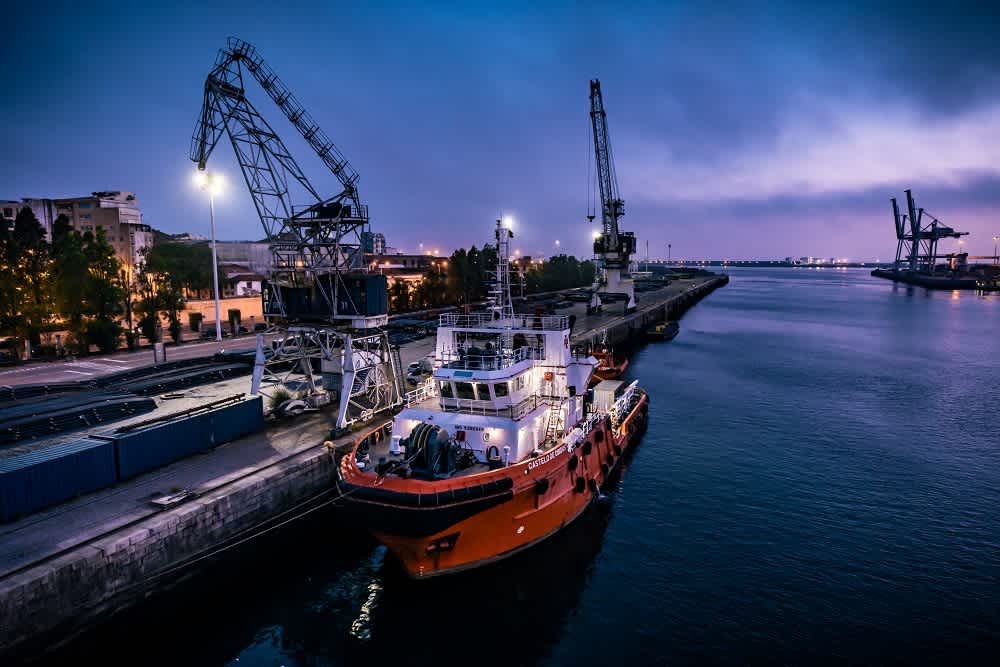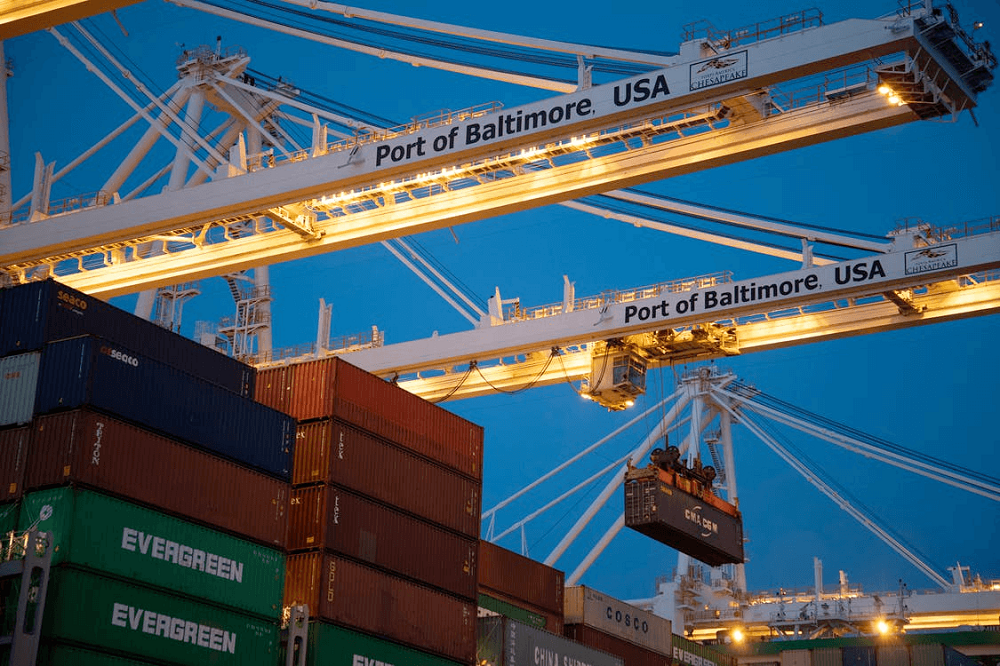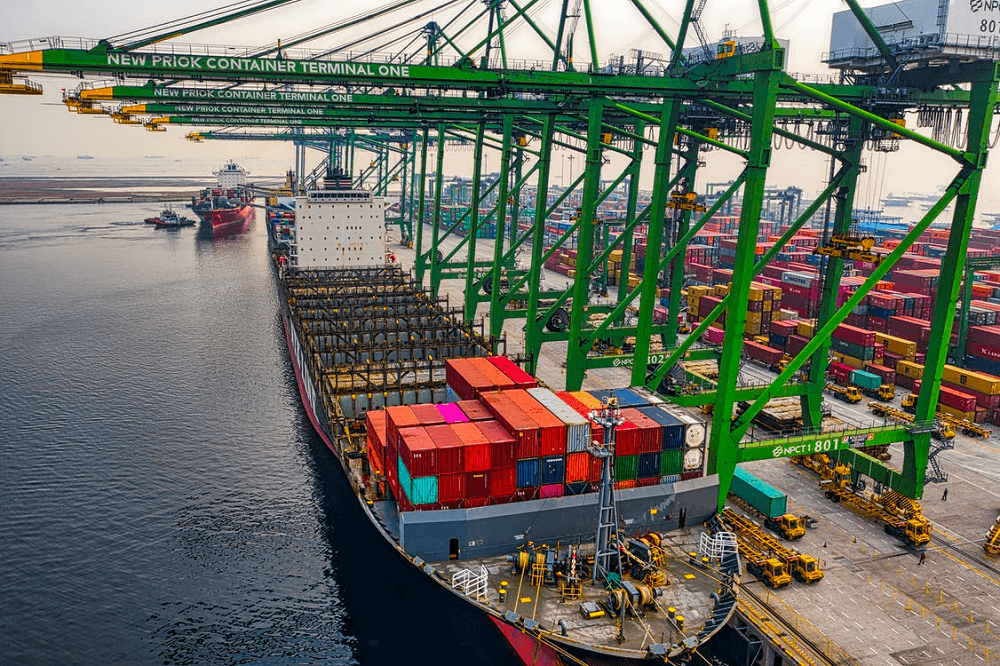
by Sam Franklin | August 03, 2022 | 10 min read
Understanding the Cost, Insurance, and Freight (CIF) Incoterm
Get fundedLast updated: September 02, 2022
Running your eCommerce business can be trickier than you think. After months of planning and careful execution, overlooked issues are always inevitable. One of the most common things people overlook is shipping, which can quickly become costly.
With shipping being one of the last steps in completing the sale, it is often something that is not given much attention until the very last minute. Unfortunately, this leaves retailers struggling when they start researching all the shipping policies available.
With so many shipping terms and policies, the International Chamber of Commerce came together in 1936 to create the Incoterms to clarify the rules regarding international shipping and cargo insurance coverages.
In this article, we will cover one of the most common Incoterms - Cost, Insurance, and Freight (CIF).
If you’re looking for information on the other Incoterms, take a look at our Incoterms Overview section.
Table of contents
- What is Cost, Insurance, and Freight (CIF)?
- Understanding the Cost, Insurance, and Freight Incoterm
- When to use CIF
- When not to use CIF
- Advantages of Cost, Insurance, and Freight
- Disadvantages of Cost, Insurance, and Freight
- CIF vs other Incoterms
- Conclusion
What is Cost, Insurance, and Freight (CIF)?

CIF insurance is one of the eleven international commerce terms (Incoterms) created by the International Chamber of Commerce in 1936. It is an international shipping agreement that stands for Cost, Insurance, and Freight. It specifies that the seller bears the cost of carriage to the destination port and has to acquire any relevant cover for the insurable interest of the buyer.
Under CIF, it is entirely the seller’s responsibility to pay freight charges, obtain insurance cover, and ensure the buyer receives the insurance document in case they need to make a claim.
Alongside the Incoterm CIP, CIF is the only other Incoterm that places the obligation on the seller to arrange the marine insurance to reduce the buyer’s risk.
CIF is exclusive to maritime shipping. This means the seller can only use it to transport goods through sea and inland waterways or on ocean freight. Sellers can’t use it for air freight or land transport.
The goods will be exported to the buyer’s named port as specified in the sales contract. The seller will be responsible for any costs resulting from loss or damage until the goods arrive at the buyer’s named port.
The seller is also responsible for packaging the goods for shipment, loading the properly packaged goods on board the vessel, obtaining relevant export licences, and ensuring the goods are delivered to the destination port on time. Once the goods reach the destination port, the buyer assumes responsibility for the onward carriage import formalities of the goods. Therefore, any additional fees associated with unloading the goods and further transport to the final destination lie with the buyer from this point.
Understanding the Cost, Insurance, and Freight Incoterm

The contract terms for CIF clearly define where the liability for the seller ends and where the responsibility is transferred to the buyer.
CIF requires a minimum level of insurance paid as identified by Clause (C) of the Institute Cargo Clauses.
The insurance coverage should be at least a minimum of 110% of the value of the goods on the sales contract - this is known as “CIF+10%”. Typically, the insurance will be an original insurance policy covering just that transaction. Additionally, the insurance coverage should be in the same currency as the contract.
Sellers will typically use CIF for non-containerised goods and bulk cargo shipping.
What do CIF terms include?
CIF's contract terms clearly define the liabilities between the buyer and seller. It also specifies at what point the responsibilities are transferred from the seller to the buyer.
A CIF policy states:
The place of destination has to be understood and acknowledged by both the buyer and seller.
The seller pays for transit and freight until the goods reach the import destination port.
The proper packaging and loading of goods at the terminal port is the seller’s responsibility.
The buyer pays for all the processing duty and onward carriage once the goods reach the destination port.
The insurance coverage.
Seller’s responsibilities
Typically, the CIF Incoterm places more responsibility on the seller’s side and is akin to a Delivered Duty Paid (DDP) Incoterm.
Here are all the responsibilities that lie with the seller in CIF:
Delivery of the goods at the named port on the sales contract.
The delivery cost for shipping goods via sea and inland waterway transport from the seller’s port to the buyer’s port.
Purchasing the export licence for the product.
Costs associated with rerouting any shipment.
All the customs formalities pre-carriage, such as providing a pre-shipment inspection of the product.
Fees associated with shipping and loading goods in the seller’s own country.
Export packaging costs.
Charges associated with loading goods onto the vessel.
Arranging the commercial invoice for customs clearance from the destination.
Paying the duties cost (for exporting) and the export tax.
The cost insurance for shipping the goods until they reach the buyer’s port.
Covering the cost of damage or loss through the insurance policy.
In addition to the above, the seller must ensure they ship the items within the agreed time frame according to the sales contract and provide proof of delivery once it reaches its destination.
Buyer’s responsibilities
The buyer still has some responsibilities in CIF, but they only apply once the goods arrive at the specified destination port.
Here are all the responsibilities that lie with the buyer in CIF:
The payment for the goods according to the invoice value.
Unloading goods at the destination port.
Transferring goods within the destination port.
All of the import and customs duties.
Any additional charges for transporting, unloading, and delivering goods to their final destination.
It is also the buyer’s responsibility to claim if anything goes wrong on the voyage.
Where is the risk transfer in the Cost, Insurance, and Freight Incoterm?

The CIF risk transfer is reasonably straightforward to understand. First, the risk associated with transporting the goods lies with the seller until the goods are loaded on the shipping vessel bound to the destination port.
The risk transfer point in CIF is different from the cost transfer point.
The risk transfer occurs when goods are loaded on the ship at the origin port. The cost transfer occurs when the goods are delivered to the destination port.
The buyer owns the goods as soon as they have been loaded on the vessel. From that point on, the risk transfers from the seller to the buyer for the voyage, and the buyer assumes the risk.
If a situation arises and a claim needs to be made, the buyer is entirely responsible for making the insurance claim with the seller’s insurance company.
When to use CIF
CIF should be used if the seller is knowledgeable about their local customs and can handle export duties accordingly.
It should also be used when a seller can obtain insurance at a cheaper rate than if the buyer finds their own insurance.
CIF is generally used if there is bulk cargo or non-containerised goods. It is also primarily used when the seller has direct access to the vessel for loading the goods.
Additionally, CIF is best used when shipping lower-value goods. However, the CIP Incoterm might be a better option for higher-value goods.
When not to use CIF
CIF should NOT be used for containerised goods. This is because this cargo can have many terminal days, where it sits at the port waiting to be loaded onto a vessel. During the terminal days, the containerised goods could easily be damaged. Unfortunately, there is no method of knowing exactly when the cargo was damaged as it remains closed until the final destination.
Typically, a seller should choose CPT or CIP for containerised cargo.
Additionally, a buyer should not agree to CIF if it is more expensive than making arrangements through their own freight forwarder or if better cargo insurance coverages are available.
Lastly, CIF can only be used for sea and inland waterway shipments and can not be used for air freight.
Advantages of Cost, Insurance, and Freight
One of the main advantages to the seller is that they often obtain cheap insurance by utilising CIF. Once the original insurance policy covering the freight has been purchased, the seller can add the cost to the sales invoice for the buyer to cover.
The only advantage of CIF for the buyer is that they do not need to declare the freight shipment to their own insurer because it is already covered and paid for by the seller.
Disadvantages of Cost, Insurance, and Freight
One of CIF's main disadvantages is that the seller can only use it for specific types of international trade. This means sellers must ensure they obtain the right shipping policy for the entire cargo journey.
Another disadvantage of CIF is that it might be hard for the buyer to take out a claim if anything goes wrong. Although the seller purchases the insurance, it is entirely the buyer’s responsibility to make a claim if something goes wrong after the goods have been loaded onto the vessel.
Typically, insurance companies tend to hold out on paying claims if they can help it, and the potential language barrier might mean the buyer may have to go through some hassle for the claim to succeed.
Finally, it is important to note that some countries don’t permit CIF imports, and some authorities require a local insurance policy.
CIF vs other Incoterms

There are over eleven different Incoterms that can be selected. Below is a comparison of CIF against other popular Incoterms.
DDP vs CIF
DDP stands for Delivery Duty Paid and places more responsibilities on the seller’s side. With DDP, the seller is responsible for additional steps along with the shipment, such as loading at the destination point, transport to the final destination, and import customs clearance, duties, and taxes.
In both agreements, the seller is responsible for any loss or damage along the journey. However, DDP places no obligations on the seller to obtain insurance.
CIP vs CIF
Under the Carriage and Insurance Paid To (CIP) Incoterm, the seller must pay for the freight and obtain insurance to the named destination. The seller is also responsible for loading goods onto the vessel at the designated destination.
The difference between CIP and CIF lies in the risk transfer. With CIP, the risk transfer occurs at the destination point, and the seller is responsible for the entire journey. In CIF, the risk transfer occurs at the loading point, and the seller is not responsible after that.
FCA vs CIF
Free Carriage Arrangement (FCA) places more responsibility on the buyer than CIF does. Under the FCA Incoterm, buyers are responsible for charges at the origin port, shipment to the destination port, and all charges at the destination port.
Conclusion
CIF is one of the most widely used Incoterms as most of the responsibilities lie with the seller, making buying easier for clients.
The Incoterm clearly defines where the transfer of risk occurs and which party is responsible across all stages of the journey.
The Incoterm permits a wide range of usage but should never be used in containerised cargo and is only applicable for sea and inland waterway journeys.
Written by

Sam founded his first startup back in 2010 and has since been building startups in the Content Marketing, SEO, eCommerce and SaaS verticals. Sam is a generalist with deep knowledge of lead generation and scaling acquisition and sales.


